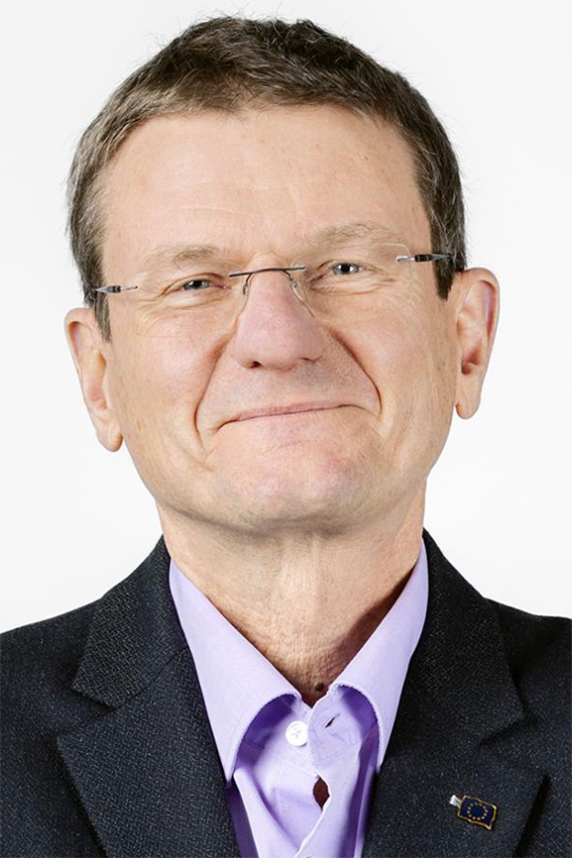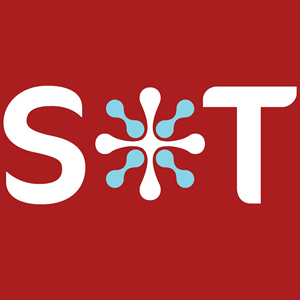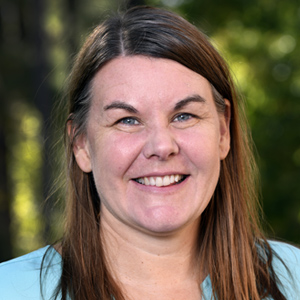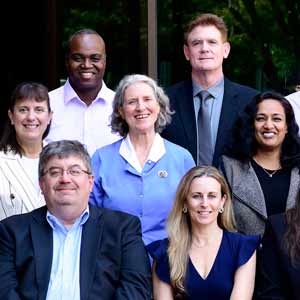The way Clemens Wittwehr sees it, reducing animal use in chemical safety testing will be accomplished by making connections: between chemicals and their toxic effects, between different data repositories, and among different groups of people interested in advancing alternatives to animal testing. He feels he’s in an ideal position to make these connections.
“I’m not a life scientist, but I’ve been working with life scientists for ages,” he remarked. “I see myself as the missing link between the IT guys and the life scientists, as well as between the scientists and the regulators.”
Wittwehr is the competence group leader for knowledge sharing in the Chemical Safety and Alternative Methods Unit of the European Commission's Joint Research Centre (JRC). He is visiting Research Triangle Park this summer to strengthen JRC’s ongoing collaborations with the National Toxicology Program (NTP) Interagency Center for the Evaluation of Alternative Methods (NICEATM) to advance alternatives to animal testing (see sidebar).
 Wittwehr manages the Organisation for Economic Co-operation and Development’s Adverse Outcome Pathway (AOP) Knowledge Base, a web resource that brings together information on how chemicals can induce adverse effects and provides a focal point for AOP development. (Photo courtesy JRC)
Wittwehr manages the Organisation for Economic Co-operation and Development’s Adverse Outcome Pathway (AOP) Knowledge Base, a web resource that brings together information on how chemicals can induce adverse effects and provides a focal point for AOP development. (Photo courtesy JRC)“The JRC’s visiting researcher program sends people out to connect with other parties,” he explained. “I’m hoping that my time here will support better collaborations between European and American regulatory bodies to promote uptake of alternatives to animal testing.”
Sharing and communicating knowledge is key
Scientific evidence supports the validity of nonanimal approaches to predicting chemical effects, according to Wittwehr. However, he is concerned that this knowledge isn’t being shared and communicated in a way that will support acceptance in a regulatory context.
Wittwehr and coauthors articulated this concern in JRC’s recent report, “Addressing Evidence Needs in Chemicals Policy and Regulation.” The report identifies barriers to acceptance of nonanimal methods, including mistrust among stakeholders in different sectors and a lack of consensus on how to use data as evidence for regulatory decisions on chemical safety.
“The pandemic showed us how important it is both to use good science as a basis for policy and to effectively communicate the validity of that science,” he commented. “We need to get that right if we’re going to replace animals for chemical safety testing.”
The JRC report suggests that trust in new approaches for chemical safety testing will be supported by developing knowledge management systems to share, visualize, and provide context for chemical safety data. This summer, Wittwehr is receiving input from NIEHS data scientists on developing these knowledge management systems.
Connecting test methods to toxic effects
The concept of the adverse outcome pathway, or AOP, is central to using nonanimal approaches to predict toxic chemical effects. An AOP is a model of the sequence of molecular, cellular, tissue, organ, organism, or even population-level events needed to produce a toxic effect after exposure to a chemical.
Nonanimal test methods measure effects of interactions between chemicals and cells or biomolecules. A test method that informs on a key event within an AOP can be combined with test methods that report on other key events within the AOP to create a testing strategy for a toxic effect. Such testing strategies have been shown to predict toxic effects as well as animal testing does.
During his visit to North Carolina, Wittwehr established and is leading the Methods2AOP initiative, which is exploring how to strengthen links between test methods and key events within AOPs. This can be accomplished through standardized reporting of test method descriptions and outcomes, and documentation that clearly communicates what the test method is measuring.
“This summer, I’m working with NICEATM data scientists to better align data in the National Toxicology Program's Integrated Chemical Environment with standard reporting templates,” Wittwehr noted. Resources such as Harmonised Template 201, issued by the Organisation for Economic Co-operation and Development (OECD), can strengthen the connection between a measurement by a test method and a biological effect induced by chemical toxicity.
Acting NICEATM Director Nicole Kleinstreuer, Ph.D., has welcomed the opportunity to collaborate with Wittwehr. “In a few short months, he has done great work with NIEHS and U.S. Environmental Protection Agency collaborators to help the U.S. participate in global efforts to standardize and apply reporting templates for mechanistic information from in vitro assays,” she said.
Wittwehr is also exploring how other types of data, such as pathological observations, can be related to AOP key events. He is collaborating with Brian Berridge, D.V.M., Ph.D., scientific director of the NIEHS Division of the National Toxicology Program, and other scientists in the division to relate such data to an AOP for cardiotoxicity. “I’m hoping we can use this as a test case to demonstrate the value of AOPs to pathologists,” Wittwehr noted.
Wittwehr expects the work he’s doing this summer to have impact beyond the Joint Research Centre and NIEHS. He’ll be reporting on the progress of the Methods2AOP initiative to a meeting this fall at OECD. Decisions made within OECD affect regulatory activities within its 38 member countries.
(Catherine Sprankle is a communications specialist for Inotiv, the contractor supporting NICEATM.)









